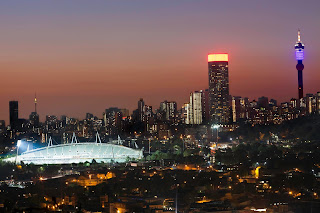United Nations is keen to bring awareness in governments and the
agencies to plan our urban future to solve urban problems including the effects
of climate change and enable improvement of living conditions.
India has 2.3% of the World’s area, but has 17.5% of the World’s
population. The population of India was 1.22 billion in the year 2011.It is
expected that by the year 2021, India will be the most populous country in the
World with 1.6 billion population.
India’s population is next only to China with 1.22 billion in the
year 2011. Urban population in India is 377 million i.e. 31.42% of the total
population and rural population is 68.52%.The urban population in Germany is
74% of the total population, 80% in United Kingdom, and 82% in U.S.A.
Population increase in India is about 15 million per year, which is equal to
the total population of Australia. Addition of 15 million population every year
will increase the problems faced if Governments do not match economic
activities, infrastructure, and facilities required to cater to the additional
population in such large numbers.
India has the second largest urban system in the World. The urban
population by the year 2021 will be about 503 million. The addition of about
126 million urban population by 2021 ie. in another nine years requires
provision of employment in non–agricultural activities, affordable housing,
water supply, power, and other infrastructural facilities as otherwise the
urban problems will increase like; slums, inadequate water, power cuts, traffic
congestion, etc. It is expected that the urban: rural ratio will be about 40: 60 by the year 2021.
It is observed that growth of mega cities is rapid in view of
employment facilities , better connectivity to other cities in the state and
the country as well as foreign countries ,higher educational opportunities,
super-specialty health facilities, recreational facilities, etc. in spite of
serious urban problems. Small and medium cities are not growing for want of
those facilities. According to 2011
Census , Mumbai was India’s most populous city with 18.4 million persons followed
by Delhi with 16.3 million persons, Kolkatta 14.1 million , Chennai 8.91 million, Bangalore 8.72 million,
Hyderabad 7.74 million, Ahamedabad 6.35 million, Pune 5.04 million, Surat 4.5
million, and Jaipur with 3.07 million persons. The land and rental values
are prohibitive in large cities. Even
middle income families are not able to afford independent houses. One land in
Mumbai was sold at Rs. 107 crore /acre during 2011. In Bangalore , rates are
quoted in Cantonment area up to Rs.25,000/sft.
The effects of unplanned urbanization is bad. About 23.5% of the
population are below the poverty line. Only 67% of the household in India have
electrical connection. Regarding the urban services, only about 50% of the
households have taps in their houses, and 60% of the households have no
sanitation facilities. Why in India such a situation exists sixty seven years after
Independence in spite of large
budget provisions in five year plans of governments and yearly budget
provisions of state governments and statutory agencies, is to be answered by the
leaders who rule the Country.The total geographical area of India is 328.726 hectares, out of
which agricultural area is 169.659 hectares. In future, only urbanization will
take place. Area under agriculture is limited. There is no way to increase agricultural
land.
Gradually area under agriculture
will reduce due to urbanization. Whereas increase in urban space is
possible by increasing number of floors in buildings in urban areas. If urban
sprawl continues utilizing agricultural lands, food production to meet the
requirements of future population will be affected and food grains will have to
be imported. It is therefore necessary to conserve the limited agricultural
lands by resorting to high density development in urban areas on wider roads.
Higher density should depend on the size of the urban area.
Karnataka had a population of 61.13 million in 2011. It is about
70.2 million in 2012. Bangalore is the only large city in Karnataka unlike
Tamilnadu and Maharashtra where there are several large cities. Bangalore is
the fifth largest city in India with 8.72 million population in the
year 2011, and about 10 million at
present. 23% of the urban population of
Karnataka are living in Bangalore City. During 1951, it was only 17%. The
primacy of Bangalore is increasing due to the urban infrastructure available in
Bangalore including connectivity to other cities in India and foreign
countries. Investors prefer Bangalore due to this reason. Other cities in the
state without the above advantages are not developing and efforts are not being
made by Government to upgrade the infrastructure in those cities and attract
economic activities.
Bangalore is faced with severe urban problems like; shortage of
drinking water, acute traffic congestion, high land and rental values, severe
air, water and noise pollution, criminal incidents, etc. With huge investments,
it may be possible to solve problems other than water supply. But availability
of water from Cauvery source is not possible due to the Cauvery River Water
Disputes Tribunal’s award that only one third of Bangalore City sloping towards
Cauvery River is eligible to get water from Cauvery source. Growth of Bangalore
therefore requires to be curbed as it is not possible to give water to
additional population after the year 2015. The State Government’s effort to get
foreign investors to Bangalore is not correct. The objective should be to
attract investors to the other cities which are not developing like;
Hubli-Dharwad, Mysore, Mangalore, Belgaum, Bellary-Hospet, Gulbarga, and
Shimoga-Bhadravathi. Proposals like that
of Infosys locating an ultra modern large educational campus in Mysore is to be
appreciated. This will help development of Mysore City which is under the
shadow of Bangalore City. Such major
activities should come up in the cities other than Bangalore. Other big firms
like Wipro, Tata, Birla, Reliance, etc may consider setting up their future
units in the other cities to encourage their growth.
For More...........:

No comments:
Post a Comment